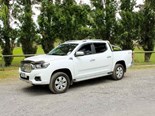Test: Manitou MLT-X 732 telehandler
With farms growing and mixer wagons becoming increasingly popular, the telehandler has become a serious contender for the tractor loading role
At the starter end of the Manitou range sits the MLT-X 732, a solid entry-level telehandler with a price tag that makes it a definite contender for the newest addition to the farm.
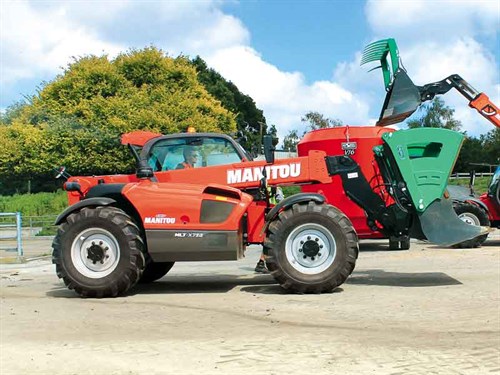
There’s something to be said for having a dedicated loading machine versatile enough to turn its hand to many chores. At a recent Giltrap AgriZone Demo Day, a line-up of three Manitou telehandlers of various sizes gave the opportunity to test drive and see this range in action. I caught up with Rob Fuller from AB Equipment, the importer for Manitou and a specialist on these machines in New Zealand.
Having looked at the bigger MLT 840 previously on a Whakatane dairy farm, I decided to check out the smaller MLT-X 732. Although an entry-level model, it boasts many features seen across the range – the hand controller joystick for one.
Operation
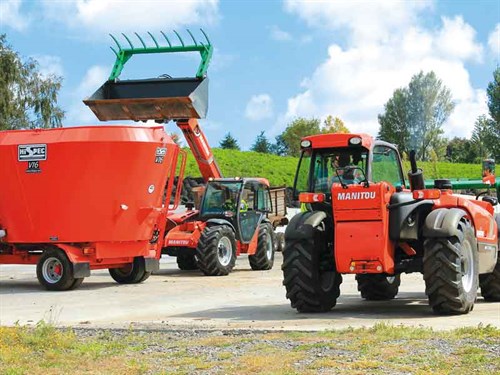
Basic operation of the Manitou range is pretty standard, with two pedals in the footwell: brake and accelerator. The 732 has a four-speed gearbox with the shifter up on the dash out of the way. The air seat is comfortable, and the cab is not huge but has enough room to keep a jacket and lunch behind the seat.
There are windscreen wipers on all but the door side window, helping keep the windows clean, so you can see what is happening around you.

Mirrors around the machine also help to eliminate any blind spots. Although we didn’t test them on the bright sunny demo day, the Manitou comes equipped with a good array of lights for when there is work still to be done when dark arrives. The heavy steel protection offered by the Manitou cab when working with the boom at height is a good safety feature.
There are loads of safety features built into the Manitou telehandlers. The auto park lock when in neutral is clever, and there is a manual handbrake on the left of the seat.
Engine/servicing
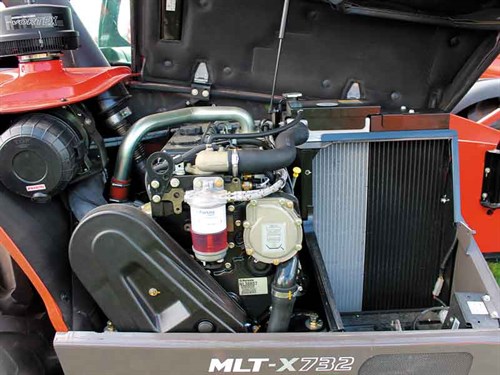
Not being in the engine manufacturing business, Manitou has no problem outsourcing the right engine for each machine, using John Deere and Kubota engines across the range. For the 732, they have opted for a reliable Perkins 4.4-litre four-cylinder, which is a Stage III A series emission level engine.
As a Stage III A engine, it is a straight diesel engine with no AdBlue to worry about, which probably keeps things simpler on farm. The Perkins has a max 95hp and 70kW rating, producing 392Nm of torque @1400rpm.

The engine is mounted between the wheels on the right of the cab and is easily accessed for servicing requirements with the large opening side cover. The sight glass for hydraulic oil is located just behind the door on the left side, so there are no excuses for not checking regularly. The filler is just a little further around on the same side.

Grease nipples are located at the rear of the machine, mostly for boom, and a grease bank system is offered on the 840 version. The diesel tank on the back right corner can be filled from ground level.
AB Equipment, the importers for Manitou, can complete any required servicing, and over the few years, specialist appointed Manitou dealers such as Giltrap AgriZone, TransAg, JJ Limited, and Stephenson & Taylor Limited who sell the agricultural Manitou models, have trained technicians to complete servicing for machines sold.
Transmission
Coming in at the lower end of the Manitou models, the 732 doesn’t receive a full powershift transmission like some of the larger models in the range. A simple four-speed gearbox effectively does the job on this model. With the power shuttle, you only need to use the clutch button mounted on the back of the gear shift lever (mounted on the right of the steering wheel).
The power shuttle control/function is located on the JSM (Joystick Switch and Move) ergonomic hand controller located for easy operation by your index finger. At the Giltrap AgriZone demo day, we lined the 732 up next to its big brother, the 840, for a paddock race. The extra 30-odd horsepower and greater top speed were evident. The 732 has a top speed of 32km/hr, which is probably enough for around the farm, considering there is no axle or cab suspension to decrease the impact of rough terrain on machine and operator.
I don’t know what category steering modes and controls come under, but like most telehandlers, three steering modes are standard on the 732: all wheel steer for greater manoeuvrability; rear wheel only, which is probably the best option to select when operating on the road at speed; and crab steer, which I have never really found a great use for but which does look/feel unique heading off across the paddock in crab mode.
Hydraulics
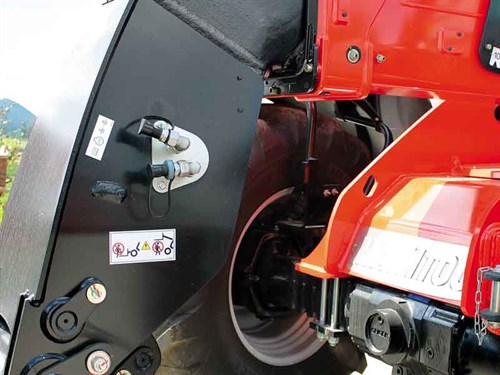
The gear type pump of the Manitou 732 has a priority valve with a max flow rate of
104 litres per minute. This seemed to be quite adequate when handling silage bales to load the HiSpec mixer wagon that we had on-site.
The ergonomic JSM controller for most functions of the Manitou loaders is probably my favourite feature of these machines. The electronic control hand unit operates all the boom functions, including third service if connected. The shuttle function keeps one hand on the wheel, allowing the other to control the machine function.
Hydraulic implement coupling is an additional option, although more often than not, you will have to connect/remove third service connections on implements. The standard coupling uses the pin system, somounting of attachments is pretty easy even if implements have been left sitting on uneven ground surfaces.
Verdict

Although you miss out on the three-point linkage and the PTO function you get with a second tractor loader, it doesn’t take long to appreciate the benefits of having an actual loading machine for loading duties, especially if you choose to kit up with the right attachments. The Manitou 732 offers a competitive option to replace a tractor loader of similar size with less lifting loading capacity.
French manufactured, the name Manitou has almost become the English word for telehandler around the world; such is the prominence in the market of the brand (with estimations of around one in every three telehandlers being sold a Manitou).
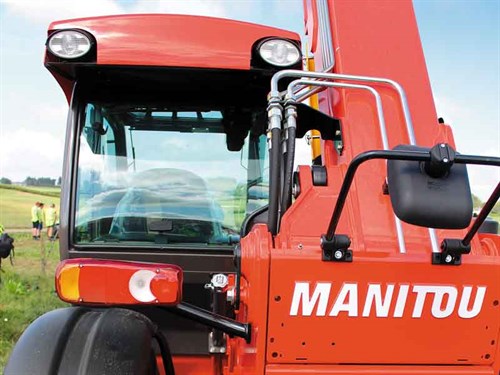
With New Zealand being a small market, there is not a lot of variation in the machine, just greater spec coming with the bigger the machine. Trailer couplings and hydraulic outlets are a good option to increase the usefulness of a telehandler for minimal cost, and it’s fair to say most farmers could find a use for the versatile Manitou telehandler.
Manitou MLT-X 732 Specifcations
Hydraulics: Gear type with priority valve 104L/min 250 Bar
Transmission: Torque converter
Gearbox: Power shuttle, 4-speed fwd, 4-speed rev
Speed: 0–32km/hr
Engine: Perkins Stage III A, 4-cylinder/4400cm3, 95/70Kw
Capacity
Lift (max weight): 3200kg
Lift (max height): 6.9m
Reach: 3.94m
Dimensions
Weight: 6845kg (incl. forks)
Width: 2.34m
Height: 2.3m
Length: 4.74m
Turning radius: 3.83m (outer wheels)
Ground clearance: 0.45m
Fuel capacity: 120L
Hydraulic oil Capacity: 128L
Service interval: 500 hours
Pluses
- Plenty of safety features built in to help prevent accidents
- Good price point for entry-level telehandler, possible tractor/FEL replacement option
- Best control joystick available in the market
Minuses
- Attachments are not interchangeable with other mounting systems
Check out more farm machinery tests on Farm Trader.
Keep up to date in the industry by signing up to Farm Trader's free newsletter or liking us on Facebook















